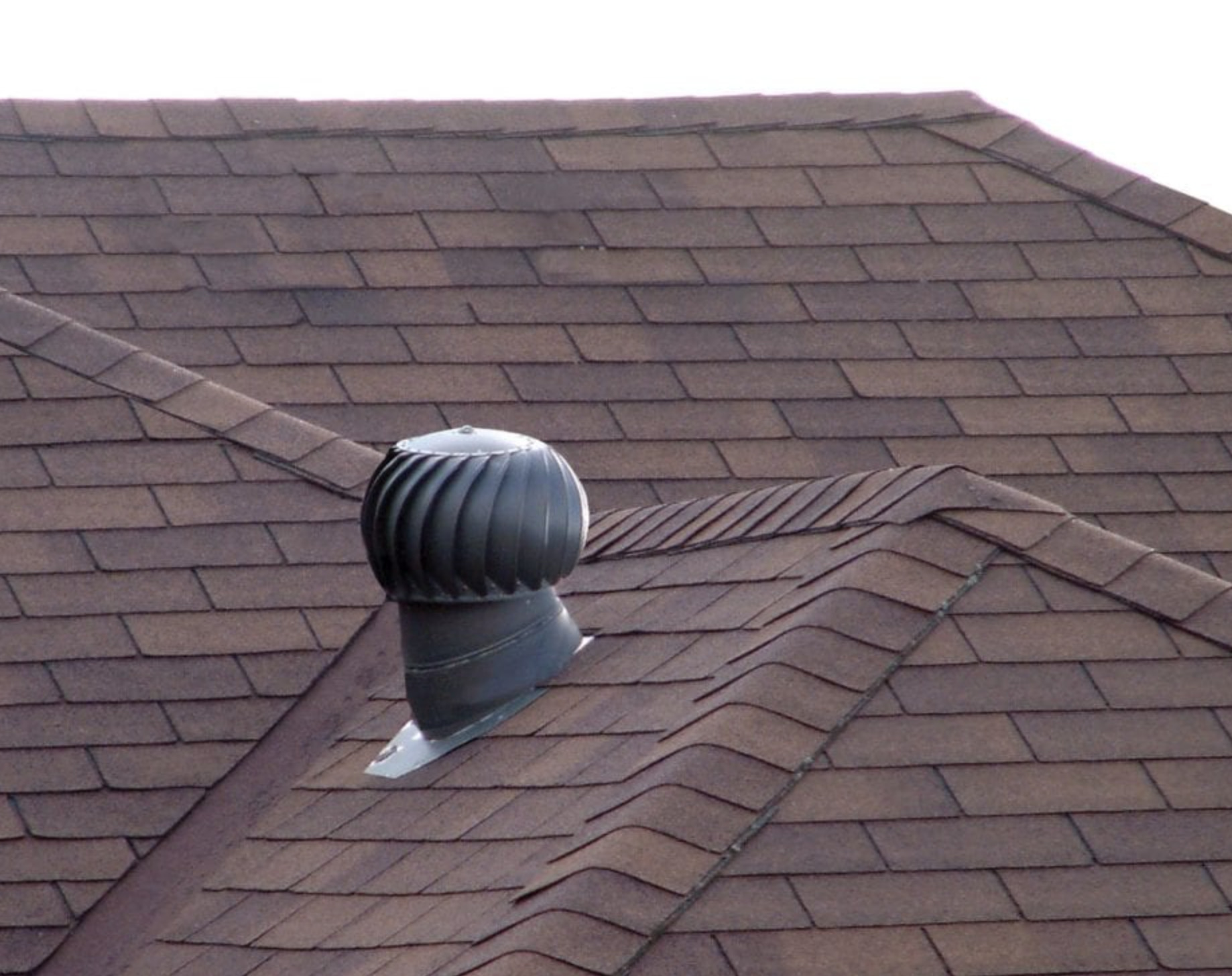If you are getting roofing work done, you may wonder about the different types of roof vents. There are multiple choices of vents that can be used on roofs, although some are only suitable for specific types of roofs. When getting a new roof done, there are many details to consider, including the vents used. The vents can use different types of power to work, and each can offer a different aesthetic. This article will focus on the following eight types of roof vents:
- Soffit Vents
- Ridge Vents
- Gable Vents
- Over Facia Vents
- Drip Edge Vents
- Cupola Vents
- Solar Vents
- Whirlybird Vents
Each section of this article will focus on one type of vent. In that section, you will learn the advantages, disadvantages, and the type of roof there are suitable for. Vents are used to let our stale air and bring fresh air in. Without proper ventilation, negative things can happen such as dry rot, poor air quality and extra moisture.
Soffit Vents
The first types of roof vents we are looking at is Soffit Vents. Soffit vents can only be used on roof styles that have eaves. Eaves are the part of the building that overhangs the exterior wall. Soffit is the material between the eaves.
The pros of soffit vents are that they can offer air intake for the vent systems in the roof. They are installed directly into the eaves, allowing the home airflow to be at a maximum level.
The major con to soffit vents is that they must be paired with a continuous ridge vent. Soffit can provide great airflow, but you will need to pay for two different venting systems if you choose Soffit.
Even though two different venting systems must be used, when both are installed correctly, it will create excellent airflow. Soffit can also reduce energy consumption and prolong the life of the roof.
Soffit does not need a lot of maintenance or upkeep after installation; however, there are some things you can do to ensure its longevity. If you install Soffit in your eaves, you will want to keep your gutters clean, keep the Soffit well-sealed, ensure you have a working attic fan, and check it periodically for problems like bee’s nests or the growth or mold or mildew.
Ridge Vents
When looking at types of roof vents, the ridge vent is one of the popular choices on the market today. Ridge vents are popular because they are very effective and can be used on all roof types – including ones that use shingles or ones that use tiles. Ridge vents are especially popular for homes in hot or humid climates.
There are many pros to choosing a ridge vent. A ridge vent offers improved airflow to a home. This vent takes out stale air and pumps fresh air to create airflow in the attic. It provides proper ventilation and is also aesthetically pleasing – as it can be barely detected from the ground level. This type of ventilation will not take away any of the charm of the home, which can affect resale value.
Poor ventilation can negatively affect a roof’s lifespan, so by investing in ridge vents, you can prolong the life of your roof and save money. Ridge vents are also seamless, which can help prevent insects from entering your home.
Ridge vents also have a few cons. Although they can be installed on all roof types, the roof has to have the right shape. They are suitable for gabled roofs but not hip roofs. These vents are also more expensive than other options, and they can let wing and, sometimes, rain through.
Gable Vents
Gable vents are the types of roof vents often seen on gable roofs. Gable roofs are roofs where the two sides of the roof slope downwards to the walls. Gable vents usually do not work well with hip roofs, roofs that have a gentler slope and where all sides slope downward.
Gable vents are not a modern solution to most peoples venting needs. In fact, they are typically seen as an older, out-of-style system. Although some consider this an out-of-style choice, many people see the main benefit of gable vents as taking something necessary and useful (a roof vent) and using it to add an architectural element to the home.
Using a gable vent is akin to passive ventilation, where the ventilation occurs as a cross-wind between two open windows. Besides adding some personality to the structure and look of the roof, the other advantages of gable vents are that they are more affordable and easier to install.
The problem with this is that they are not providing as much ventilation as other available methods, like ridge vents. Another disadvantage comes to light when comparing gable vents to the more standard choice of today – the ridge vent. Gable vents are more prone to cause leaks in the home.
Over Facia Vents
Facia falls into the common types of roof vents category, and they are very similar to Soffit vents. Facia is placed in the decorative board along the side of the overhang for ventilation. Facia board is usually used to create a nice finish to a roof, adding style and a clean look and feel. The facia vent is placed over this board which is where the term over facia vents comes from. Often, the boards are extended to the edge of the roof’s rafters. Facia is also like Soffit because they are usually only used on homes with eaves.
Facia does an outstanding job of creating proper airflow. These vents can bring in fresh air, take out stale air and create an excellent airflow. Facia vents can also help prolong the life of your roof through proper ventilation. This is done by providing an airflow path through the roof. Over facia is also good for preventing a build-up of condensation, preventing pests from getting into your home, and helping people to save money on their energy bills.
The major con to using over-facia vents is that they can only be on specific homes where eaves are present. Also, proper installation is crucial. Without proper installation, you could run into leaks, facia that appears to need to be painted, painting that is peeing, and rotting wood.
Drip Edge Vents
When looking at different types of roof vents, you may also come across drip edge vents. Sometimes these vents are referred to as gutter aprons. They get their name from preventing moisture from seeping underneath the edges.
Drip edge vents are a popular choice for all types of roofs as they can be used on most roof types as they are just a protective metal sheath that fits around the edge of the roof.
One of the pros to this type of ventilation is that it is excellent regardless of where you are in the country and the type of weather patterns you see. Drip edges can be vents, but they can also just be decorative options for a room, as they come in many different styles. Drip edges can protect roofs from rain, snow, and ice. The difference between drip edge protectors and vents is that the vents feature holes to let air into the roof.
Drip edge vents are a good vent, but most people think Soffit is the better choice in comparison. Drip edge is also a highly complex installation. This is not a suitable DIY project, and professionals must be hired for this job. This is because the drip edge must go under the first row of shingles.
Cupola Vents
One of the more fun and decorative types of roof vents available is Cupola Vents. The Cupola Vent is a fabulous choice if you want something fun and unique or want to add a little curb appeal to your home. This is especially important for people replacing the roof and ventilation system with an eye on resale value. A cupola looks like a small tower on top of the home, making this a conversation piece and a unique home in the neighborhood.
Cupolas are especially popular in rural areas because they were initially used on barns to help cool down animals. The cupola vent can come with an additional feature, such as louvered vents, which allows moist air to be sent outdoors. This will lower the attic’s temperature and help prevent mildew growth and rotting wood. Some other benefits of this style of vent include adding a simple look to a home and its quiet nature.
Of course, there are some cons to this style as well. Although beautiful, they are challenging to install and can be quite expensive. The cupola can require more maintenance or repair than other types of vents. Another thing that has been known to happen is that since they have an open look, birds and other animals can make nests in them, causing airflow to lessen. Finally, they are less effective than other vents on the market today.
Solar Vents
There are many types of roof vents available, but if you are searching for ones that help with green energy or that could be the way of the future, solar vents are the answer you are seeking. Solar panels can be used on most types of buildings, especially because they come in different varieties. This is also a product that will continue to grow and change as technology is discovered.
There are many pros to using solar vents. After the initial installation, there will be little to no additional costs unless repairs are needed. In fact, you may save money on your energy bills by using them. Many other vents are hard-wired into the home and cost money to run monthly. This is not the case with solar vents. Because you are using solar power, you are using a product designed for renewable energy, which lessens your carbon footprint.
Solar vents will also keep your attic temperature low, which means you will save money by not using additional air-conditioning to lower the attic’s temperature. They also don’t create additional noise pollution, and there will be no carbon monoxide dangers associated with using solar vents. This choice can also raise the curb appeal of your home. An improved appearance while using the energy of the future can be a selling point for your home.
There are some cons to solar vents as well. If they can not charge for some reason, they will not run. They can be more pricey to install. Although they may be cost-efficient over the long run, the upfront fees may price you out of this type of roof vent. Air movement is not always the best, depending on the model of solar vent that you have.
Whirlybird Vents
Our final choice when looking at types of roof vents is the Whirlybird vent, also known as roof turbines. This is a wind-powered ventilation system known for its distinctive shape and size – it is a large metal bulb with fins on the outside to catch the wind.
There are many different benefits to using a whirlybird. One of them is that it is wind-powered, with no need for any energy to create movement. The design of the whirlybird is also very well-thought-out and effective, and they rarely break down.
Another benefit is that they are both waterproof and quiet. This vent is almost always silent and only makes noise when it breaks down. Roof turbines are also a low-cost option.
Of course, there are disadvantages to this type of vent system. Although you will not incur any energy costs, it is heavily dependent on the environment to work. If there is no wind, the turbine will not turn. Another problem is that they can not be turned off. If you live in a colder climate, it can not be turned off during winter. While running in the winter, it can take away valuable warm air from your home, raising your energy costs.
Typically, you will need more than one whirlybird to get the right amount of ventilation. However, even with four roof turbines, you would still need vents in the ceiling or the eaves to get the proper airflow.
Final Thoughts
There are many different types of roof vents for you to choose one during a roofing or remodeling job on your home. Many of these vent types are suitable for all homes, but a few can only be installed on specific roof types.
When deciding the type of roof vent you want, you should compare the pros and cons of different models. There are all types of vents to choose from, including hard-wired, solar, or wind-powered ones that can add architectural details and curbside appeal to your home.
When making a final decision, you should also consider the upfront costs and future energy or maintenance costs that come with each different type.



